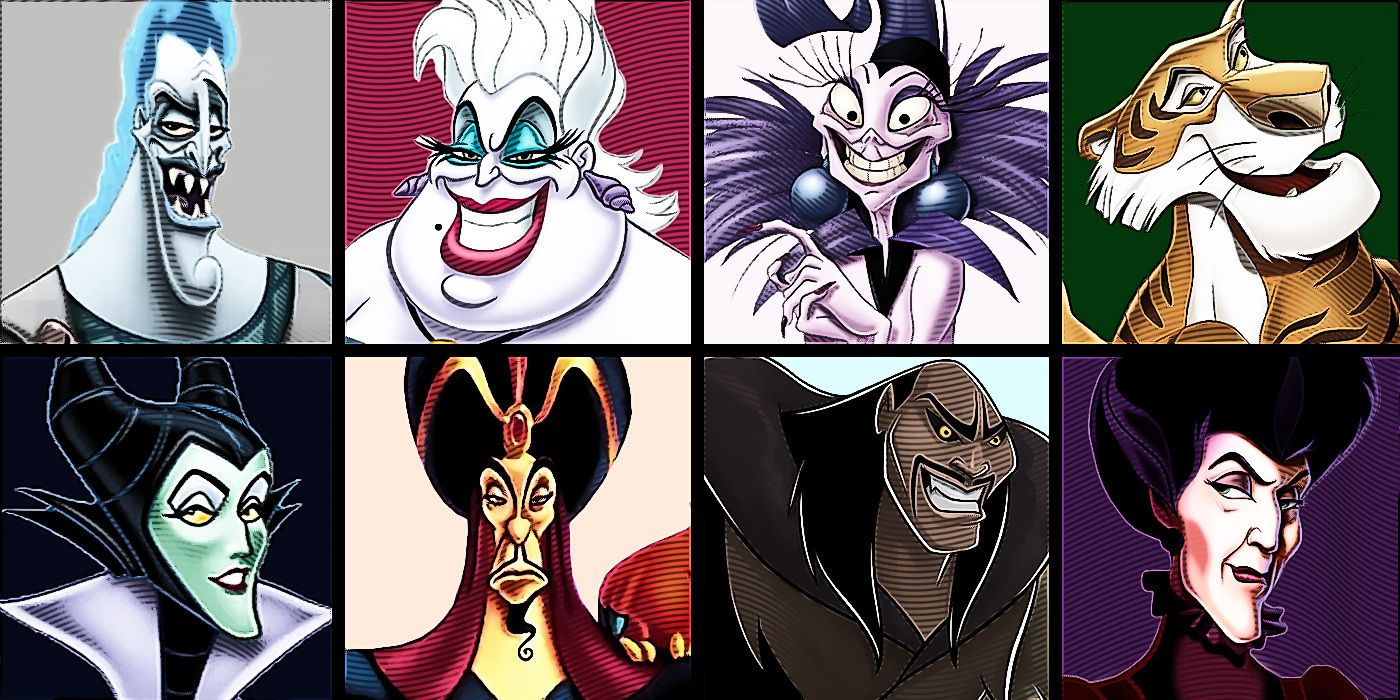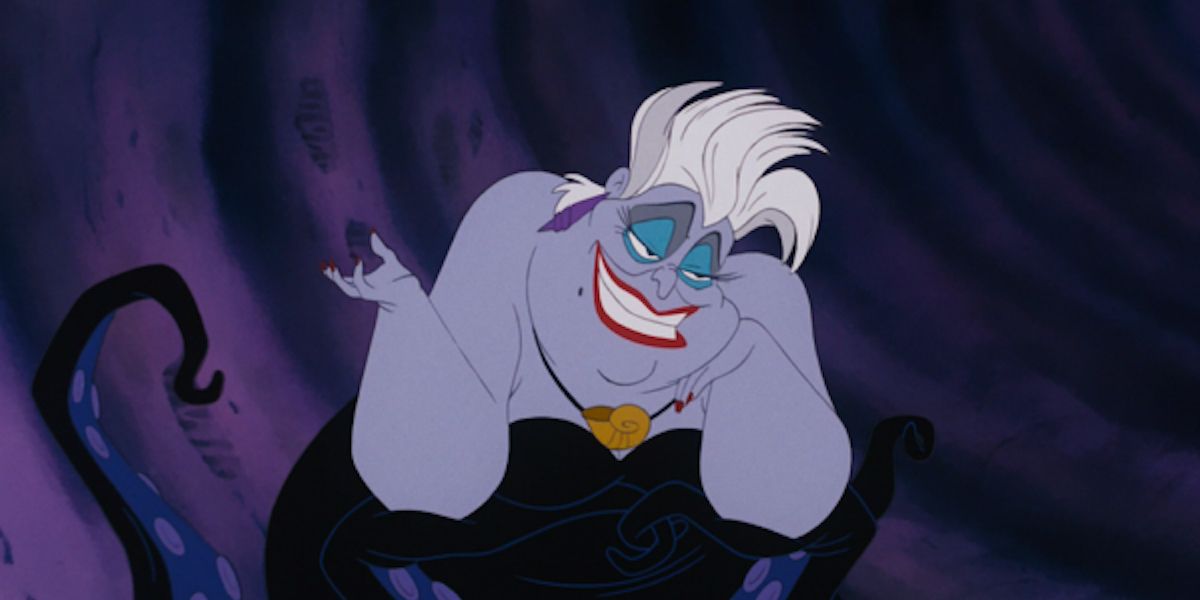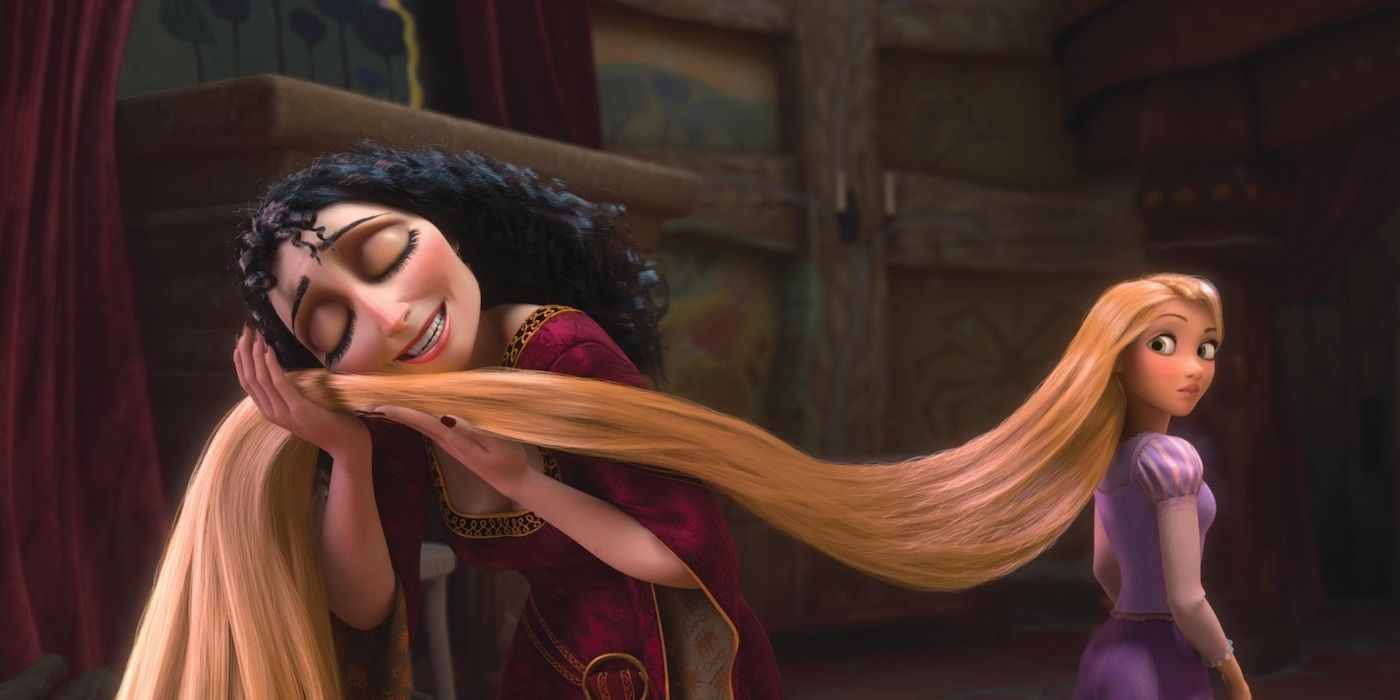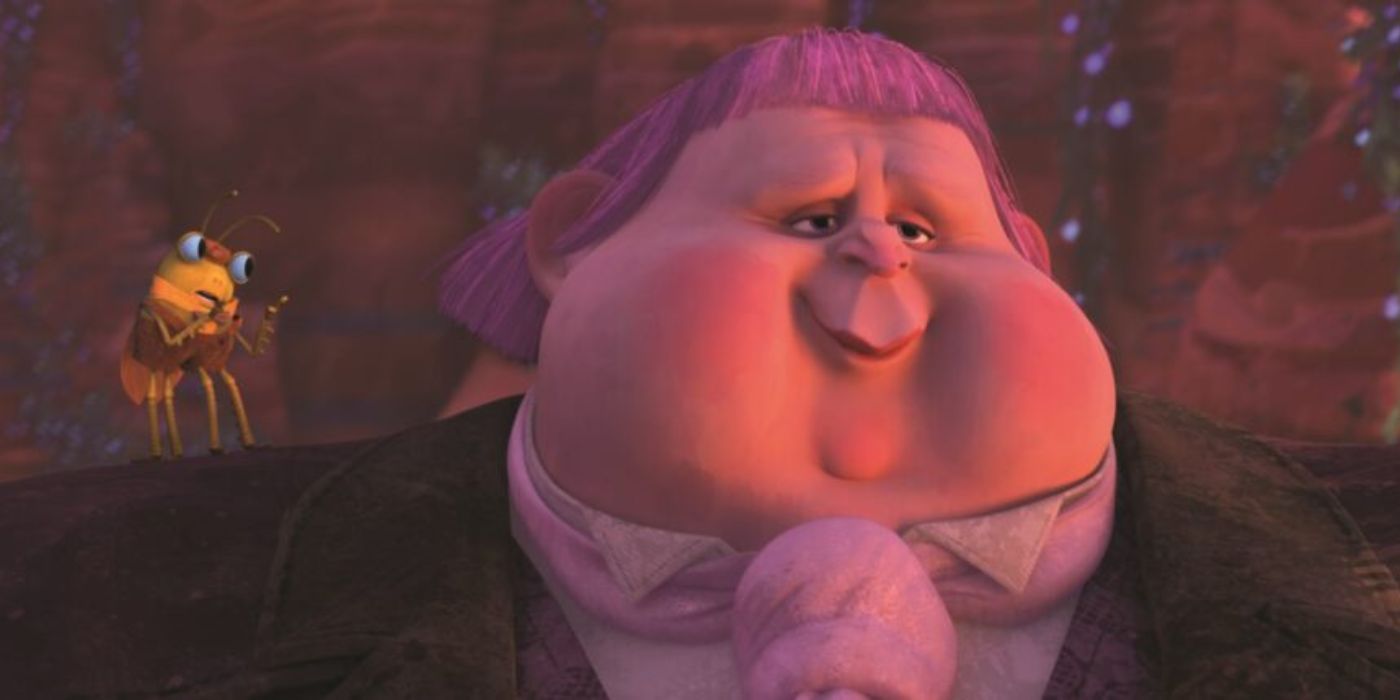Everybody loves a good Disney villain. The characters are some of the most memorable across Disney canon, from the cackling Ursula to the boisterous Gaston to the scheming Scar. However, despite this, there’s been a bit of a sea change in the more recent Disney animated fare. Villains are becoming quite scarce, and classic maniacal “Disney Villains” even more so. Often the story won’t contain a villain at all, or if it does, there may be a “twist villain” – only revealing their evil nature towards the end of the movie, with no time for an iconic villain song. These new movies aren’t just missing out on a well-worn trope, they’re missing out on an iconic part of what made earlier Disney movies so good, and it’s about time they started bringing them back.
Why Disney Villains Are So Iconic
The movies of the “Disney renaissance” (generally regarded as lasting from 1989 to around 1999) are some of the most beloved stories that the studio has ever created, bringing the studio out of its slump and into a new brief golden age that is still well-remembered today. Beginning with The Little Mermaid, the decade brought new animated classics with structures inspired by musical theatre, with many additional songs and stories more focused on the struggles of the main characters rather than the comic relief around them. These films remain so successful and iconic that Disney has in recent years found a lucrative new business in remaking the films (leading to quite mixed critical reception), updating the classic Disney tradition of re-releasing their movies in cinemas every few decades. An essential component of almost all of these renaissance era movies is that almost all of them have an iconic villain to accompany them, an often charismatic and scene-stealing character with a song to outline their evil to the audience. Even in the case of less well-received movies of the time period like The Hunchback of Notre Dame and Hercules, their villains are often regarded as the highlight of the film, with Hunchback’s surprisingly mature and dark Frollo (Tony Jay) and Hercules’ wise-cracking and hilarious Hades (James Woods).
What is it about these villains that gain such a great amount of audience attention? Much of it likely comes from their big personalities—these characters are most often having fun, and it’s difficult for the audience not to enjoy themselves along with the villains, especially during their iconic musical numbers. Whether it’s Scar’s "Be Prepared," Ursula’s "Poor Unfortunate Souls," or even Gaston’s…”Gaston,” these songs are less to show what the villains want or to express some internal strife, but rather a celebration of “themselves” an egotistical monument to their own success – in musical theatre language, they’re “I am” songs as opposed to the classic hero “I want” song. A good example of this gap can be seen in The Little Mermaid, Ursula’s (Pat Carroll) "Poor Unfortunate Souls" is an “I am” song, and Ariel’s (Jodi Benson) iconic (and almost removed) "Part Of Your World" is an “I want” song. These characters enter the narrative fully formed and entirely confident in themselves, and it’s fun as an audience to see a character just reveling in their own villainy. Since the villains are already fully established and rounded it means that the story doesn’t need to be too bifurcated in its focus, it can reserve almost all of its character-developing time for the heroes of its stories.
It might seem like adding more rounded characters to a movie’s story might make the story better overall, but when you want to tell a particular story a few flat characters can still enhance it. Disney villains from the renaissance era are usually fairly single-minded, standard evil characters, but that’s by design, it’s not like the writers just “forgot” to add depth to them. They serve the plot both as solid comedic relief but also as a good obstacle to further the main character's development.
Why Disney Villains Aren’t As Prevalent Anymore
As with most modern Disney trends, the lack of classic villains in newer animated films can be traced back to the 2014 powerhouse Frozen. Despite the two previous princess films The Princess and the Frog and Tangled both utilizing renaissance-style villains, Frozen was the pioneer of the twist villain – and in a film that often sought to criticize earlier Disney films as being regressive or trope-heavy, that decision carried both weight and influence. Since then, there’s only really been one villain that really fit the role of a classic Disney Villain in any of the studio's recent animated movies, that being Tamatoa (Jemaine Clement) from Moana, and not only does he only shows up for one scene, he isn’t even the main villain. Other movies such as Encanto forgo a villain entirely, instead telling a story where the conflict is driven by its large cast of characters needing to work together to overcome their problems.
This isn’t entirely a negative change. Despite the fun of a campy Disney villain, they inherently limit the types of stories that can be told. When you’re telling a very insular story about one family’s interpersonal dynamics like in Encanto, having a comical outside force would divide the interest in the audience and leave less time for the massive cast of main characters in the movie to get individual scenes to express themselves (the movie already has that problem with characters like Ravi Cabot-Conyers' Antonio disappearing from the narrative). This isn’t even exclusive to just the animated division in Disney, there’s also been a push for more complex and nuanced villains across the Marvel Cinematic Universe with the popularity of certain characters like Killmonger (Michael B. Jordan, who is intentionally written to have valid and understandable problems that the heroes also need to tackle. Even older villains that were once on the level of classic Disney Villains have been reappraised by the brand with movies such as Maleficent and Cruella, adding nuance to what were once some of the most classically and uncomplicated evil villains that the studio had.
A complex villain isn’t always a bad thing, but the fact that the studio has almost abandoned them entirely feels a bit like an overreaction. It also feels like a bit of an implicit criticism of these older films, as if these movies are all just super simplistic ‘good vs evil’ stories by virtue of having these Disney Villains. While movies like Aladdin do have pretty excellent villains in Jafar (Jonathan Freeman) and Iago (Gilbert Gottfried) their presence doesn’t diminish the story's focus. The movie is instead focused on the internal struggle of its title characters, the villains are simply obstacles to improve their respective plots, and the plot is resolved by the journeys of the protagonists rather than the defeat of the villains.
Disney Villains Can Still Work Today
One of the best examples of how classical Disney villains can still work came not from the Disney studio itself, but from its longtime rival DreamWorks in the form of Jack Horner (John Mulaney) from the recent smash hit Puss in Boots: The Last Wish. Similarly to the original Shrek, which famously modeled its villain on Disney’s CEO at the time Michael Eisner, Horner is a bit of a criticism and commentary on Disney itself. Horner feels like a response to the prevalence of sympathetic and complex villains that Disney is increasingly leaning towards, most obviously highlighted in a scene where a character directly asks Horner if he has a reason for his evil ways, and Horner dismisses the idea entirely. Not only is it a fun bit of parody, but Horner is so entertaining as a villain that he works without any knowledge of what DreamWorks appears to be poking fun at. Aside from his lack of a villain song, he embodies every trait that old great Disney villains embody so well. He’s confident, hammy, over the top, unabashedly evil, and, ultimately, little more than a fun obstacle for the heroes to overcome during their own personal journeys. His presence doesn’t turn the movie into a standard ‘good vs evil’ morality tale, the morals stay exactly the same with or without him, but he improves all the scenes he’s in because he’s just plain fun to watch.
That’s the core that recent Disney movies seem to be missing in regard to classic Disney villains – the good plain fun. The villains don’t need to be the only obstacle (or even the dominant obstacle in The Last Wish’s case) the heroes face, and they don’t need to be in every movie that Disney puts out, but some stories can definitely be enhanced with a bit of that old school charm. They add both comedy and conflict to the narrative without stepping too hard on the central themes or storylines that run through the movie. They ensure that the movie never feels so serious that it becomes hard to watch without sacrificing tension. If the heroes constantly crack jokes and are overly confident, it makes it harder to root for them. If the villains do it, then it just makes evil feel like more of a satisfying obstacle to overcome.
Disney has always leveraged its immense back catalog and pedigree when presenting itself as a brand. Whether that’s the use of its mascot Mickey and friends, continuous remakes of its old successful movies, or even the fact that Disney’s central theme is an instrumental of "When You Wish Upon a Star" from Pinocchio. Disney, perhaps more so than any other brand, is one that banks and relies on nostalgia, hoping to reawaken feelings of childhood wonder in every one of its new movies, parks, and franchises. However, the Disney villains are an integral part of that old identity, and while the new movies might bank on nostalgia for these older movies, without villains that are themselves iconic, they’re missing an essential component – a bit of nostalgic fun that infused their older movies with the staying power that has led to them being remade today. The studio can still tell interesting stories without fun villains, but those older stories were able to tell affecting tales about identity while still indulging in a bit of engaging villainy. Movies like The Last Wish show that you can have your cake and eat it too, a bit of classical villainy might be just what these newest Disney movies need to stand side by side with the classics of yesteryear.




